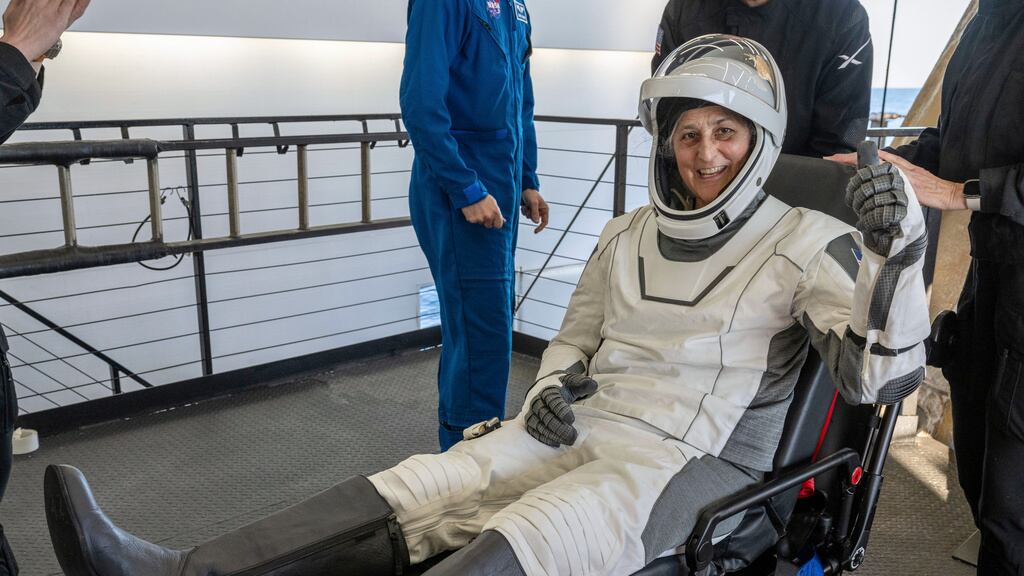CAPE CANAVERAL, Florida, USA (AP) — NASA astronauts Butch Wilmore and Suni Williams returned to Earth on Tuesday to conclude a saga that began with a failed test flight over nine months ago.
PUBLICIDAD
The SpaceX capsule landed in the Gulf of Mexico at 5:57 pm, just a few hours after departing from the International Space Station. The landing took place off the coast of Tallahassee, Florida, bringing an end to its unplanned odyssey.
PUBLICIDAD
Why were the two astronauts stranded in space?
It all started with a faulty test flight of a Boeing aircraft last year.
It was expected that both of them would be back just a week after leaving on the new crewed Boeing Starliner capsule on June 5. However, so many issues arose on the way to the space station that NASA sent the empty Starliner back and transferred the test pilots to SpaceX, delaying their return trip until February.
Then, the problems with the SpaceX capsule added another month to its mission.
The arrival of the relief crew on Sunday meant that Wilmore and Williams could finally leave. NASA made them leave a little earlier, given the uncertain weather forecast for later this week.
Wilmore and Williams traveled alongside Nick Hague from NASA and Russian cosmonaut Alexander Gorbunov, who arrived aboard a SpaceX capsule at the end of last year with two empty seats reserved for the Starliner pair.
Wilmore and Williams ended up spending 286 days in space, 278 days more than originally planned when they took off. They orbited the Earth 4,576 times and traveled 195 million kilometers (121 million miles) until the moment of splashdown.
“On behalf of SpaceX, welcome home,” transmitted the SpaceX Mission Control in California.
“What a trip,” replied Hague, the capsule commander.
Although other astronauts have completed longer space flights, none had to deal with such uncertainty or see the duration of their mission expand in the way they did.
Wilmore and Williams quickly went from being guests to being members of the orbital outpost crew, conducting experiments, repairing equipment, and even going on spacewalks together. With 62 hours across nine spacewalks, Williams set a new record: the astronaut with the most hours on spacewalks.
Both had been on the ISS before, so they were familiar with how it operated, and they caught up on their training at the station before taking off. Williams became the station commander three months after her arrival and held the position until this month.
Its mission took an unexpected turn at the end of January when U.S. President Donald Trump asked SpaceX founder Elon Musk to speed up its return and blamed the delay on former President Joe Biden’s administration. The new SpaceX crew replacement capsule was not yet ready to fly, so the private space technology company replaced it with a used one, speeding up the schedule by a few weeks.
Even in the midst of the political storm, Wilmore and Williams continued to remain calm in their public appearances from space, without blaming anyone and insisting that they supported NASA’s decisions from the beginning.
NASA hired SpaceX and Boeing after the shuttle program ended, in order to have two competing American companies to transport astronauts to and from the space station until it is abandoned in 2030. By then, it will have been in space for over three decades, and the plan is to replace it with privately operated stations so that NASA can focus on missions to the Moon and Mars.
The family cost for stranded astronauts
Wilmore and Williams, both retired Navy captains, indicated that they didn’t mind spending more time in space, an extended deployment that reminded them of their days in the military. But they acknowledged that it was difficult for their families.
Wilmore, 62, missed most of his youngest daughter’s last year of high school; his oldest daughter is in college. Williams, 59, had to settle for internet calls from space to his mother and relatives.
What will the astronauts do now?
After landing in the Gulf of Mexico, Wilmore and Williams will have to undergo several medical check-ups before flying to Houston, where the NASA Johnson Space Center is located, to reunite with their loved ones.
The astronauts will be checked by flight surgeons as they adapt to gravity, officials said, and will be allowed to go home after several days.
Then there will be several months of recovery after nine months living without gravity.
